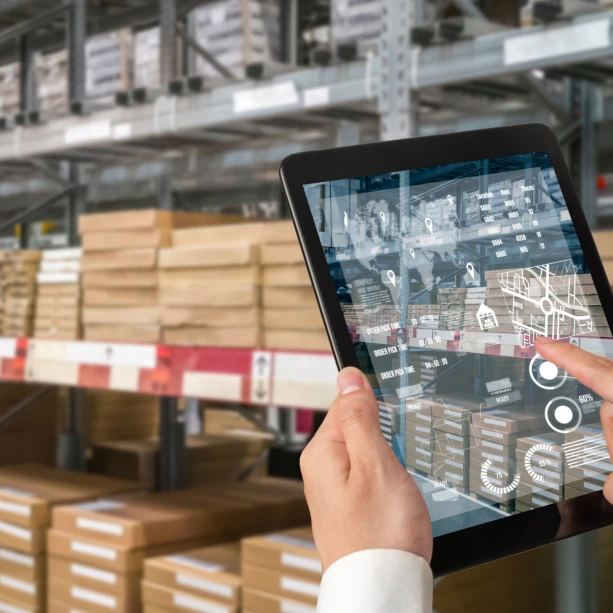If you’ve been in business for any amount of time, you’re aware of how important it is to be proactive in your initiatives. Acting proactively sets your company up for success by avoiding those issues that can be avoided and being prepared for the ones that are unavoidable. Arming yourself with the proper tools ensures your company is able to handle with agility the problems they face. Being proactive isn’t easy to do on your own. That’s why tools like supply chain management have been created to aid companies in their proactive efforts. By harnessing the power of supply chain management, your company can not only weather the storms of uncertainty, but also chart a course towards sustained growth and competitive advantage.
Increase Your ROI by Investing in AirFinder Everywhere
- Loss Prevention. Reduce the amount of loss that occurs during the supply chain process
- Location Coverage. AirFinder Everywhere uses a combination of GPS, Cellular, and WiFi to determine location everywhere
- Security Alerts. Know when a delay in shipment has occurred so the problem
can be addressed immediately.
Why You Should Have a Proactive Supply Chain
A reactive approach to supply chain management is no longer sufficient for companies looking to thrive in their industry. Not only does a reactive strategy prevent you from thriving, it makes it difficult for you to remain afloat. The traditional model of responding to disruptions as they occur has proven to be inefficient and detrimental to a company’s bottom line. This is where the concept of a proactive supply chain comes into play, representing a paradigm shift in how companies handle their operations. A proactive supply chain is characterized by its ability to anticipate and effectively respond to potential disruptions before they occur. It leverages advanced technologies, including supply chain management software, to safeguard against risks and seize opportunities for growth.
5 Reasons To Be Proactive
1. Risk Mitigation
When taking a proactive approach to supply chain management, companies are able to take action to mitigate the risks they face. When companies can identify the cause of the risks they face, they are able to take action to prevent those occurrences from happening in the future. Not every problem can be prevented, though. It’s still important to find the cause of recurring problems so your company can create a plan on how to address those problems when they do occur. These efforts save the company time and money that would otherwise be spent rushing to fix big problems and address the situation.
2. Cost Optimization
Acting proactively has become a financial lifeline for many companies. When companies prevent issues within the supply chain, they are avoiding the costs associated with solving those problems and the lost labor costs from time spent addressing the problem. Additionally, when companies plan ahead, they have better management of their resources. Large companies have a lot of inventory that they need to manage. When things get busy, it’s easy to throw money at a problem to fix it. For instance, if a certain location lacks the proper resources, it’s easy to solve the problem by purchasing more resources. A less expensive solution is to evaluate the resources at every location. If one location has extra resources, they can be reallocated to the location lacking. Furthermore, adjustments can be made for the future so the over-resourced location won’t be wasting money on extra resources and the under-resourced location won’t be lacking the resources they need to operate.
3. Customer Service
When companies take a proactive approach to addressing problems, they increase their customer satisfaction. Wne you proactively minimize supply chain disruptions, customers will have a more positive experience with your company and will be more likely to trust you. When problems do occur, a proactive strategy allows you to update the customer on the situation at hand, how you addressed it, and how it impacted them. Customers would rather return to a company that has been transparent with them rather than one that keeps their problems a secret. Additionally, companies can utilize the information they gain from their supply chain management system to inform decisions on improving supply chain management processes. When companies strive to make improvements, customers are satisfied and more likely to return.
4. Improved Efficiency
Taking a proactive approach leads to an increase in overall efficiency. When risks are prevented, companies spend less time putting out fires and more time accomplishing their tasks. Proactivity leads to streamlined operations, since companies can plan and allocate resources based on data analytics. Being proactive in supply chain management translates to increased agility and responsiveness. As changes in the industry occur, being proactive means you have the resources to adjust to those changes as they happen. This prevents you from falling behind and gives you space to make improvements to existing processes. The more improvements your company makes, the more efficiently your supply chain operates.
5. Demand Forecasting
A proactive approach enables companies to transcend the limitations of a reactive supply chain and instead, anticipate market trends and consumer preferences before they occur. By studying historical data and leveraging advanced analytics, proactive companies gain valuable insights that lead to more accurate and timely demand forecasts. This proactive stance empowers companies to better align transportation schedules and fine-tune their supply chain operations to meet projected demand with precision. By recognizing patterns and potential deviations early on, businesses can adjust their strategies before changes occur.
The Best Tool To Use To Be Proactive
The real-time visibility you gain from a supply chain management system is the most useful tool your company can use to switch to a proactive approach. A supply chain management system provides visibility of every asset you have, even the non-powered ones! While your trailers are on the move, transporting goods to your customers or other warehouses, you can see them and the assets being transported at all times. If a delay occurs while the trailer is in route, like traffic caused by an accident, you can receive a real-time update of the situation through use of the system. This way, you can take action quickly with the plan you already have prepared. Many times, delays in supply chain activities go unnoticed by fleet managers, hurting the customer’s experience. With supply chain visibility, fleet managers always know what’s going on. The data gathered by this system allows companies to evaluate how efficient they are operating, and they can use the data to make decisions for improvement. Additionally, the data can be used to identify problem areas as they occur. For example, there may be delays faced in the same stop multiple times along a route a truck takes. With this knowledge, fleet managers can make the decision to avoid traveling along this route to avoid the delays it comes with.
Risk also comes in the form of theft. Trailers are high-value targets for thieves looking to make quick money. Sometimes they want the trailer, other times they want what’s on the trailer. With the geofencing capabilities that come with our AirFinder supply chain management solution, companies can set up virtual boundaries around their facilities. When an asset crosses the boundary unexpectedly, managers can take action as soon as the incident occurs. Sometimes the thieves can be caught before they even leave the property, and if they’re not, the tag on the asset will provide location information for retrieval.
Another problem certain companies managing logistics operations face is ensuring temperature sensitive assets are safely transported. If the refrigerator on a trailer fails or a trailer is packed incorrectly for proper airflow, the temperature of the assets can fall out of range and spoil. Our supply chain management system, AirFinder, is embedded with sensors that monitor temperature at all times. If the temperature falls below or above the specified threshold, fleet managers can alert the driver to pull over to address the situation before spoilage occurs. Without this visibility, spoilage will occur without anyone knowing and this situation can lead to foodborne illnesses among consumers. Even if you did eventually find out that the food was spoiled, you’re wasting a lot of money on the production and transportation of food that is unsafe to eat and potentially accruing compliance fines.
Are You Ready to Switch To a Proactive Approach?
AirFinder Everywhere has revolutionized supply chain management by providing real-time visibility throughout the entire supply chain with asset tracking technology. Companies can use this visibility to track their assets no matter where they are. They can use this information to prevent and address any problems they face. This proactive approach allows for agile decision-making and overall improvement in supply chain management strategies. With its seamless integration and user-friendly interface, AirFinder Everywhere empowers companies to stay ahead of the curve, ensuring products reach their destination efficiently and on time.
In embracing the proactive approach of supply chain management, companies can unlock a powerful arsenal of strategies that fortify their operations against the uncertainties of the modern marketplace. By mitigating risks, optimizing costs, enhancing customer satisfaction,and more, companies can position themselves as agile, forward-thinking industry leaders. Those who leverage the potential of supply chain management as a proactive force are poised not only to survive but to thrive in today's dynamic business landscape. The journey towards a resilient, efficient, and future-ready supply chain begins with the decision to be proactive. It is a decision that paves the way for sustained success, growth, and a competitive edge in an ever-evolving marketplace. If you’re looking to pursue a proactive supply chain strategy with a supply chain management system, book a demo with our team.





